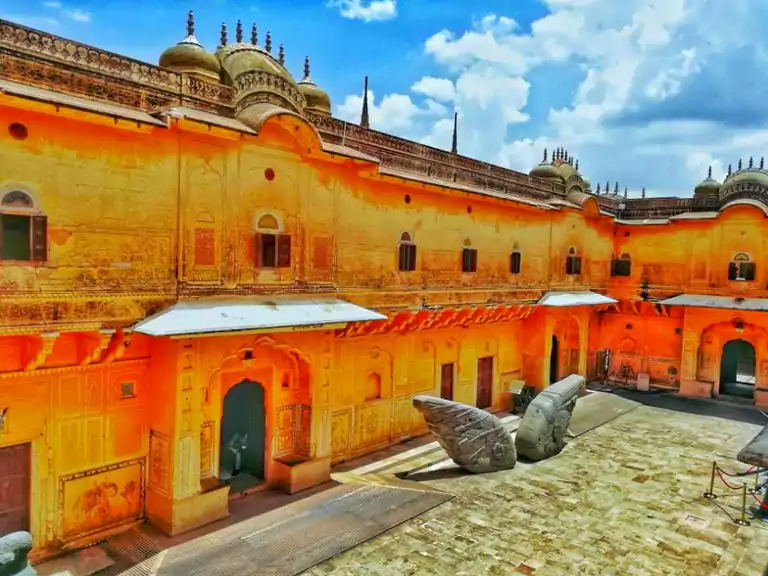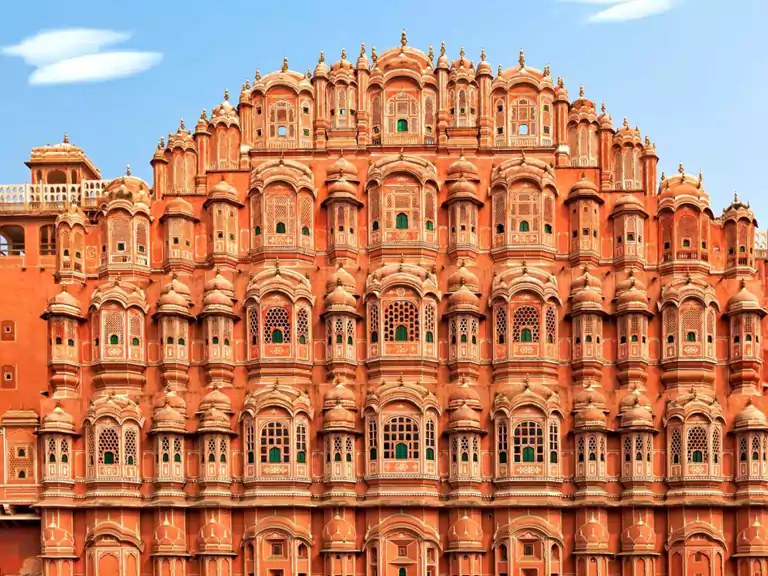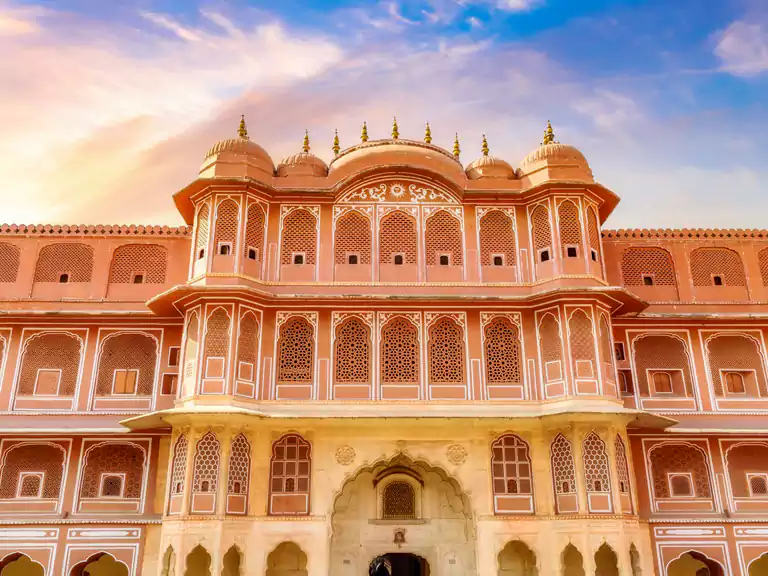
Amber Fort
Amer Fort is known for its artistic Hindu style elements. With its large ramparts and series of gates and cobbled paths, the fort overlooks Maota Lake. It is the main source of water for the Amer palace..
Amer Fort is located 11 kilometres (6.8 mi) from Jaipur, Rajasthan state, India

Nahargarh Fort
Built mainly in 1734 by Maharaja Sawai Jai Singh II, the founder of Jaipur, the fort was constructed as a place of retreat on the summit of the ridge above the city. Walls extended over the surrounding hills, forming fortifications that connected this fort to Jaigarh, the fort above the old capital of Amber.

Hawa Mahal
The palace, called a “specimen of fanciful architecture”, is located to the south of the Jaipur city, at the main road intersection called the Badi Chaupad (big four square). Jaipur city is well connected by road, rail and air links with the rest of the country. Jaipur Railway Station is a central main station on the broad gauge line of the Indian Railways.

Jantar Mantar
The Jantar Mantar monument of Jaipur, Rajasthan is a collection of nineteen architectural astronomical instruments, built by the Rajput king Sawai Jai Singh, and completed in 1734 CE. It features the world’s largest stone sundial, and is a UNESCO World Heritage site.

City Place
City Palace, Jaipur, which includes the Chandra Mahal and Mubarak Mahal palaces and other buildings, is a palace complex in Jaipur, the capital of the Rajasthan state, India. It was the seat of the Maharaja of Jaipur, the head of the Kachwaha Rajput clan. The Chandra Mahal palace now houses a museum but the greatest part of it is still a royal residence. The palace complex, located northeast of the centre of the grid-patterned Jaipur city, incorporates an impressive and vast array of courtyards, gardens and buildings.
